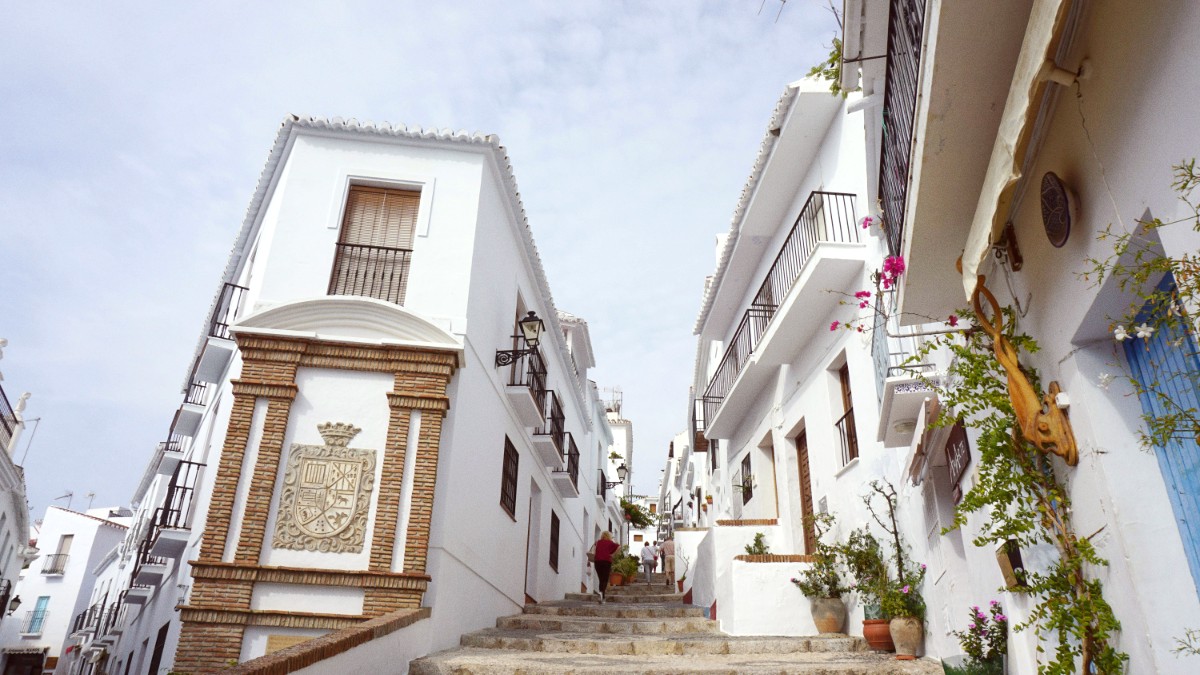
Andalucia, Spain
These months bring mild temperatures, typically ranging from 15-25°C (59-77°F). Precipitation stays low, and humidity stays at moderate levels. This period offers comfortable conditions for outdoor activities and sightseeing. The sea begins to warm. Days are long.
Summer in Nerja means hot and dry conditions, with temperatures often reaching 28-35°C (82-95°F) or even higher during heatwaves. Rainfall is rare. Humidity levels stay moderate to low. This is peak beach season. Evenings bring pleasant relief with cooler breezes.
These estimates provide a general guide. Actual costs vary based on your choices and current prices.
While Nerja a stable climate, some considerations apply. Occasional heavy rainfall occurs, especially during autumn and winter. These downpours lead to localized flooding.
June-August
Warmest weather, excellent for beaches. Town buzzes. All attractions, restaurants, and services open. Abundant evening entertainment.
Larger crowds. Accommodation and flight prices highest. Intense heat makes daytime sightseeing tiring.
April-May, September-October
Pleasant temperatures. Suitable for sightseeing, hiking, outdoor activities. Crowds smaller than high season. Prices generally lower. Sea warm enough for swimming in September/October. Wildflowers in spring, soft autumn light.
Some seasonal businesses may have reduced hours or be closed. Weather less predictable than summer.
November-March
Fewest crowds. Serene local experience. Lowest prices for accommodation and flights. Mild temperatures suitable for hiking and cultural exploration. Enjoy popular attractions with greater ease.
Cooler weather limits beach activities. Some smaller establishments may close. Shorter days.
Occasional heavy rainfall occurs, especially during autumn and winter. These downpours lead to localized flooding. Keep an eye on local weather forecasts.
Wildfires pose a risk during the hot, dry summer months. Local authorities issue warnings, and visitors always adhere to any fire bans.
June through September. Sea is warmest, amenities operational.
April, May, October, November. Comfortable temperatures.
April, May, September, October, and winter months. Fewer crowds.
Maro-Cerro Gordo Natural Park, best in warmer months.
Cooler months are ideal for inland excursions.
Spain is part of the Schengen Area, a zone of 27 European countries that abolished passport and all other types of border control at their mutual borders.
Non-EU/EEA citizens typically enter the Schengen Area for tourism or business for up to 90 days within any 180-day period without a visa. This applies to citizens of many countries, including the United States, Canada, the United Kingdom, Australia, and New Zealand. Counting the 180-day period begins on the first day you enter any Schengen country. You enter and exit multiple times, but your total stay must not exceed 90 days within that 180-day window.
For stays exceeding 90 days or for purposes other than tourism (e.g., study, work, family reunification), specific national visas apply. These visas are country-specific. Apply for these at the Spanish Embassy or Consulate in your country of residence well in advance. Spain does not impose general entry fees for tourism. Upon arrival, you go through standard passport control. Immigration officers ask about your purpose of visit.
Spain has a high-quality public healthcare system. Numerous private clinics operate in Nerja. Most tourists use private facilities, especially with travel insurance. These clinics often have English-speaking staff. You may pay upfront and claim reimbursement.
Spain offers a good standard of public health and general safety.
Nerja is a safe town with low crime rates. It has a welcoming atmosphere. Occasional pickpocketing occurs in crowded areas, especially during peak season (e.g., Balcón de Europa, busy markets). Remain vigilant with your belongings. Do not leave bags unattended.
The town center and tourist areas remain safe, even at night. Use common sense, as you would in any unfamiliar place. Avoid walking alone in poorly lit or deserted areas late at night.
No specific vaccinations are required. Ensure routine vaccinations are up-to-date. Consult your healthcare provider four to six weeks before your trip.
Recommended: MMR, DTaP, Varicella, Polio, Flu shot.
Always check official government travel advisories for current requirements.
Tap water in Nerja is generally safe to drink. It meets EU standards. Many locals drink tap water without issue. If you prefer, bottled water is readily available.
Food hygiene standards in restaurants and eateries are high.
When buying fresh produce from markets, wash it thoroughly before eating.
Travel insurance is strongly recommended for all travelers to Spain. A policy should cover medical emergencies, trip cancellation, personal liability, and theft.
Coverage for belongings, including passports and valuables.
Read policy details carefully to understand coverage and exclusions.
| Travel Style | Accommodation (€) | Total Daily Est. (€) |
|---|---|---|
| Budget Traveler | 30-60 (hostel/guesthouse) | 65-130 |
| Mid-Range Traveler | 60-120 (3-star hotel/apt) | 130-250 |
| Luxury Traveler | 120-300+ (4/5-star hotel) | 250-600+ |